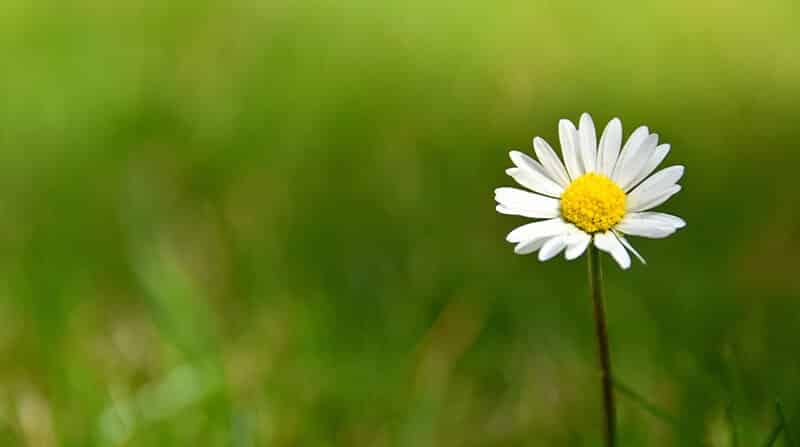Daisies or Bellis Perennis as they are scientifically known, go by a few names, including;
- The English daisy
- The common daisy, or
- The lawn daisy
Whatever you call them, they divide opinion amongst gardeners. Some people love them while others do everything they can to get rid of them.
If you’re adamant that you hate them and you want to remove them from your lawn, then I’ll show you how.
But if you’re on the fence and you’re not sure what to do about the daisy population in your lawn then read on and I’ll offer my thoughts.
6 Quick Facts About the Common Daisy
Lawn daisies are one of the most common and recognisable lawn weeds (or flowers, depending on how you look at it).
The reason they’re so common is that they grow in nearly all types of soil, from acidic to alkaline. They even grow well in lawns that suffer from heavy compaction.
Like White Clover and Bird’s Foot Trefoil daisies are a perennial plant that spreads via seed and short underground runners called Stolons.
Daisies have an unmistakable appearance and produce mats of foliage and small flowers with white petals and little yellow centres.
Their flowers are usually seen between March and October but they are also visible during mild winters.
They can appear as a result of infrequent lawn mowing.
Are Daisies Flowers or Weeds?
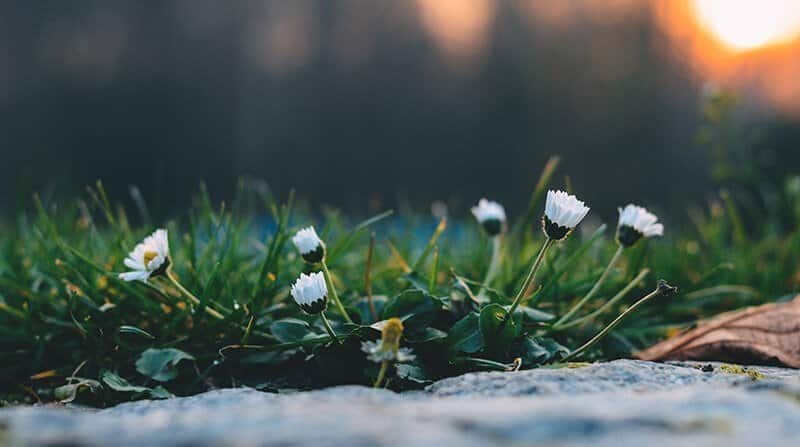
Whether you consider daisies to be flowers or weeds is very much personal opinion.
While daisies popping up out of the lawn might be welcome for one gardener, another will look for the best way to remove them.
Technically they’re a flower.
But if they populate areas of your garden that you don’t want them to (your lawn for example) then yes, you could consider them as weeds.
At the end of the day, your garden is a canvas for free expression and you get to decide what are weeds and what are flowers.
In My Opinion…
…Daisies do have their place in some lawns.
While I don’t like a lot of them, I do like to see an odd sprinkling of daisies in English country style gardens that feature lots of wildflowers.
I think they help to bring the lawn and flowers together as a cohesive space.
But ornamental lawns in formal gardens?
For me, these kinds of lawns are masterpieces in their own right and should be treated with that kind of respect. Daisies should not exist in these spaces and I do everything I can to remove them.
So there you have it, some people love daisies, some hate them. I love them in certain situations and hate them in others.
How to Remove Daisies From Your Lawn
If you’re sat on the side of the fence that hates daisies and you want to get rid of them you have a couple of ways to go about it;
Remove them With a Daisy Grubber
If you only have one or two daisy patches in your lawn you can dig them out using a daisy grubber.
Watch the video below to see how to use a daisy grubber;
Simply push the fork into the ground around the roots and lever the daisies out of the ground.
It helps to lever the daisies from all sides as this will loosen all the roots and bring the whole daisy up in one piece. If you just do it from one side, you risk breaking the roots and leaving some of them in the ground.
Kill Them With a Spot Spray Weed Killer
Again, if you only have a few daisies and you’d prefer to kill them instead of digging them out, use a selective weed killer like Resolva Weedkiller Spray.
This type of weed killer is excellent because kill all kinds of broad-leafed weeds as well as clovers like Lesser Trefoil and Medicago Lupulina but they don’t affect the grass when applied as a spot treatment.
- Small spray bottle ideal for small areas
- Non-glyphosate formulation
However, if you have a lot of daisies in your lawn…
Treat the Whole Lawn With a Selective Weed Killer Concentrate
If daisies and other weeds like Dandelions are running riot in your lawn, spot treating them won’t work. You’ll have to treat the whole lawn with a weedkiller concentrate like Weedol Weedkiller Concentrate.
Weed killer concentrates are designed to be mixed with water but they have to be mixed correctly. If you dilute it too much you won’t kill the weeds, if you make it too strong, you risk killing the grass.
So make sure you get your quantities right!
- Apply through a sprayer or watering can
- Non-glyphosate formulation
That said, some suppliers sell ‘liquid shots’ which are pre-measured doses. This makes measuring and diluting easy.
Read: What Kind of Weed Killer Should I Use on My Lawn?
How to Prevent Daisies From Returning
Weeds are often a symptom of poor lawn health so killing them is only half the battle. To stop them from returning you need to make sure your lawn is healthy and dense so there is no room for weeds to grow.
Here are the steps you should take for a healthy lawn and prevent daisies (or any other weeds for that matter) from growing in your lawn;
Mow the Lawn Regularly

Cutting the grass on a regular basis causes the grass to grow sideways and produce new leaves. This means the lawn becomes dense so there is no room for daisies to get a foothold.
Also, keep your grass on the higher side when conditions for growth aren’t perfect. This will block the light that weeds need grow.
Read: How to Mow the Lawn Like a Pro: Everything You Should Know About Grass Cutting
Also Read: Choosing the Right Mower For Your Lawn
Keep the Soil Fertile
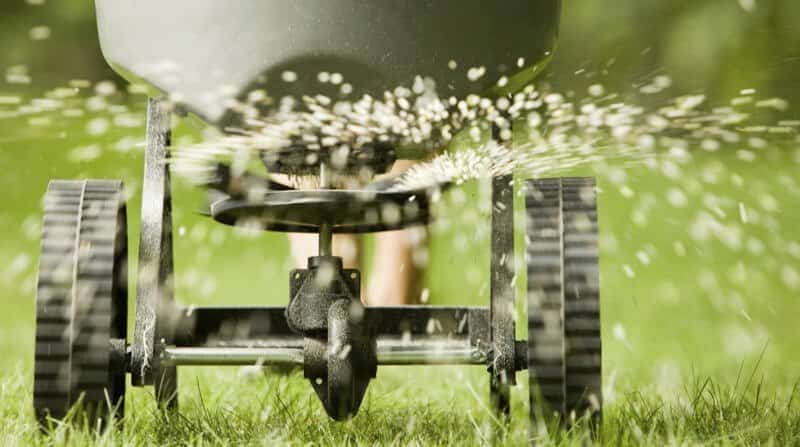
When the soil isn’t fertile it can stunt grass growth, resulting in a patchy lawn with sparse grass.
Weeds, especially daisies love this kind of environment and grow well in them.
Using a good quality fertiliser put much-needed Nitrogen, Potassium and Phosphorous back into the soil. These elements are critical for promoting grass growth and health.
Read: Lawn Fertiliser: What, Why, When and How to Feed Your Lawn
Also Read: Out of the Thousands of Lawn Feed Products OUt There, Here are My Top 6
Reduce Lawn Thatch
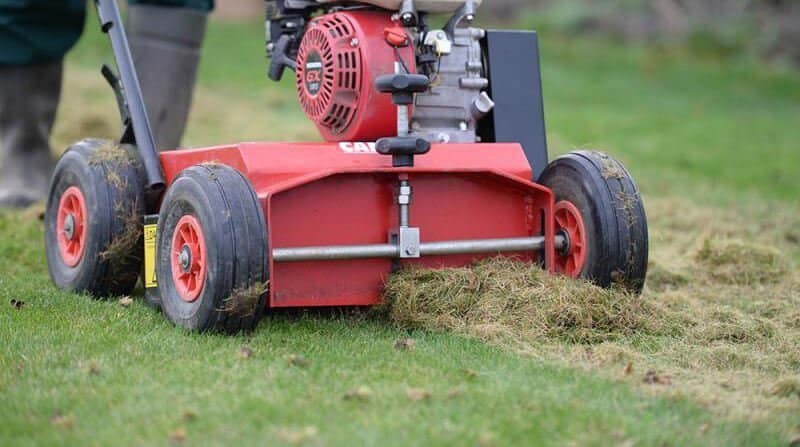
Lawn thatch is made up of living and dead grass roots and other organic material that sits just under the surface of the soil.
A little bit of lawn thatch is a good thing as it helps prevent disease. Too much of it prevents water, air and nutrients from penetrating the soil. Without these, grass can’t grow and stay healthy.
Test your lawn for lawn thatch and scarify your lawn (in the autumn) if needed to reduce the amount of thatch.
Read: Lawn Scarification: Why, When and How to Scarify Your Lawn (The Ultimate Guide)
Read: Which is the Best Grass Scarifier? Reviews Plus Buyers Guide
Reduce Soil Compaction
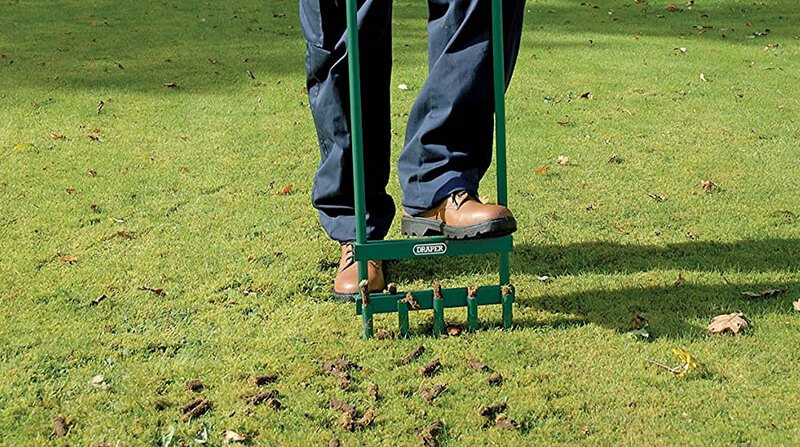
Soil compaction occurs when soil particles are squeezed together, pushing out the air and water around them.
It happens in family lawns where kids and pets play, around goal posts, washing lines and the route that your postman takes to your front door.
Over time, the soil can become so compacted that the grasses roots are unable to grow and pretty much no water, air, or nutrients can penetrate the soil. This results in weak, unhealthy and patchy grass.
To relieve soil compaction you need to aerate the lawn. This is best done in the autumn when the rains come and the ground is slightly softer.
Read: Lawn Aeration: Everything You Need to Know About Aerating Your Lawn (The Ultimate Guide)
So, Are Daisies For You?
Having daises in the lawn has been and always will be a source of debate. And like anything else, the topic is argued to death online.
At the end of the day, your garden and your lawn are yours to do what do want with. If you like your lawn with daisies in it, keep them. Or go and buy some daisy seeds if you want to add more.
If you don’t like them, they’re easy enough to remove.
So, where do you stand on the side of this argument? Let me know in the comments.
